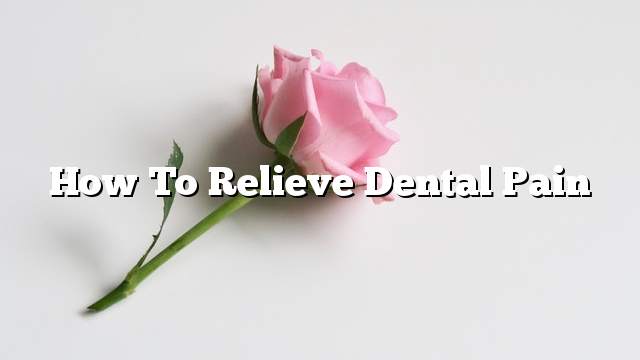Toothache
Dental pain is the feeling of pain in or around the tooth, or in the jaw, and usually tooth decay is the cause of pain in the teeth, there is more than a face of pain, may be pain for a period of specific or intermittent or may be persistent, may cause eating and drinking pain If the food or drink is hot or cold, and the pain may be severe or sudden or aggravated when sleeping and lying down, the area surrounding the affected tooth becomes sore and becomes more sensitive to pain when touched.
It may be difficult for the person to determine the area of pain whether in the upper or lower jaw, and sometimes the patient may feel the pain of the teeth in places other than the infected teeth themselves, such as the pain in the lower back teeth and the patient in the ear, or pain in The upper teeth are felt by the patient in the sinuses; the sinuses are small aerobic cavities located behind the cheek and front bones.
Dental pain relief
Dental pain can be relieved by following the following methods before going to the dentist:
- Rinse with warm water.
- Clean the teeth with a medical thread to ensure that any remaining food remains stuck between the teeth.
- The use of clove oil to relieve pain, placed on a small piece of cotton, and then placed on the affected tooth.
- Use cold compresses and place them on the pain area when the pain is due to the exposure of the tooth to a blow or accident.
Symptoms that require a dentist visit
The patient should visit the dentist as soon as possible when he or she has symptoms such as: a sharp pain in the teeth for a day or two, a feeling of fever, an earache, or a wide open mouth. Is necessary if there is swelling or swelling in the mouth or face.
Diagnosis of dental pain
For a correct diagnosis of pain it is necessary to know the timing of the pain, as the pain experienced by the patient when biting on solid food is usually the result of a broken age or any of the surrounding parts, but if the pain is caused by tooth decay, The case that the pulp has been damaged. The doctor usually asks many questions for the patient to get a correct diagnosis, as the doctor asks the patient about the timing of the pain ie: when does the pain begin? How severe is it? Where is the pain site? What are the things that increase or decrease pain?
Treatment of dental pain
The method used to treat dental pain depends on the cause of the pain. The dentist examines the patient’s mouth and examines it and sometimes takes radiographs to confirm the cause of the pain and diagnosis. If tooth decay is the cause of the pain, the dentist should remove the caries and replace it with a pad. If the pain is caused by a fracture in one of the dental fillings, the dentist must remove the old filler and replace it with a new one, taking into account the removal of cavities if any.
In some cases tooth pain is the result of a tooth infection. In this case, the treatment of the pulp should be performed for the age. The doctor may resort to the extraction of the tooth if the pain is due to a tooth or tooth that can not be treated in one of the above methods.
Causes of tooth pain
There are many reasons that lead to dental pain, the most important of which are:
- Dental caries: Caries is the main cause of dental pain in children and adults alike. Oral bacteria analyze the sugar accumulated on the teeth from food residues and turn it into an acid which in turn dissolves the outer surface of the tooth and causes holes in it. Pain when eating hot foods or too cold or sweet taste.
- Accumulation of food residues between the teeth, especially if there are spaces between the teeth.
- Tooth or gingivitis.
- Teeth are exposed to blows or accidents.
- The presence of a fracture in the body of the tooth or root of the tooth.
- The onset of new tooth eruption through the gums.
- Gum retreat, where the contraction of the gums expose the sensitive part of the root of the tooth.
- Soft or broken dental fillings.
- Dental abscess: It collects bacterial inflammation around the teeth.
- An abscess of the tooth, which collects bacterial inflammation in the gums.
- Gingivitis.
- Inflammation of the sinus sinusitis, inflammation may lead to pain in the upper jaw.
Prevention of dental pain
There are many ways to avoid toothache, including:
- Reduce the intake of sugary foods and beverages.
- Clean the teeth with toothbrush and fluoride toothpaste, and clean the gums and tongue carefully.
- Cleaning teeth between the teeth and using mouthwashes if necessary.
- stop smoking.
